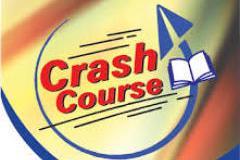Class 10 Syllabus :
Â
Unit I: Chemical Substances - Nature and Behavior
Chemical reactions
Acids, bases and salts
Metals and non metals
Carbon compounds
Periodic classification of elements
Unit II: World of Living
Life processes
Control and co-ordination in animals and plants
Reproduction
Heredity and evolution
Unit III: Natural Phenomenon
Reflection of light
Refraction; laws of refraction, refractive index.
Unit IV: Effects of Current
Magnetic effects of current
Electric current, potential difference and electric current.
Unit V: Natural Resources
Sources of energy
Our environment
Management of natural resources
Â
Class 9th Syllabus :
Â
Unit I: Matter - Nature and Behaviour
Definition of matter; solid, liquid and gas; characteristics - shape, volume, density; change of state-melting (absorption of heat), freezing, evaporation (cooling by evaporation), condensation, sublimation.
Nature of matter: Elements, compounds and mixtures. Heterogenous and homogenous mixtures, colloids and suspensions.
Particle nature, basic units: Atoms and molecules, Law of constant proportions, Atomic and molecular masses. Mole concept : Relationship of mole to mass of the particles and numbers.
Structure of atoms: Electrons, protons and neutrons, valency, chemical formula of common compounds. Isotopes and Isobars.
Cell - Basic Unit of life: Cell as a basic unit of life; prokaryotic and eukaryotic cells, multicellular organisms; cell membrane and cell wall, cell organelles; chloroplast, mitochondria, vacuoles, endoplasmic reticulum, Golgi apparatus; nucleus, chromosomes - basic structure, number.
Tissues, Organs, Organ System, Organism: Structure and functions of animal and plant tissues (four types in animals; meristematic and permanent tissues in plants).
Biological Diversity: Diversity of plants and animals - basic issues in scientific naming, basis of classification. Hierarchy of categories / groups, Major groups of plants (salient features) (Bacteria, Thalophyta, Bryo phyta, Pteridophyta, gymnosperms and Angiosperms). Major groups of animals (salient features) (Non-chordates upto phyla and chordates upto classes).
Health and Diseases: Health and its failure. Infectious and Non-infectious diseases, their causes and manifestation. Diseases caused by microbes (Virus, Bacteria and protozoans) and their prevention, Principles of treatment and prevention. Pulse Polio programmes.
Motion: Distance and displacement, velocity; uniform and non-uniform motion along a straight line; acceleration, distance-time and velocity-time graphs for uniform motion and uniformly accelerated motion, equations of motion by graphical method; elementary idea of uniform circular motion.
Force and Newton's laws: Force and Motion, Newtonâ??s Laws of Motion, Action and reaction forces, Inertia of a body, Inertia and mass, Momentum, Force and Acceleration. Elementary idea of conservation of Momentum.
Gravitation: Gravitation; universal law of gravitation, force of gravitation of the earth (gravity), acceleration due to gravity; mass and weight; free fall.
Floatation: Thrust and pressure. Archimedes' principle, buoyancy, elementary idea of relative density.
Work, energy and power: Work done by a force, energy, power; kinetic and potential energy; law of conservation of energy.
Sound: Nature of sound and its propagation in various media, speed of sound, range of hearing in humans; ultrasound; reflection of sound; echo and SONAR. Structure of the human ear (auditory aspect only).
Physical resources: Air, Water, Soil. Air for respiration, for combustion, for moderating temperatures; movements of air and its role in bringing rains across India.
Air, water and soil pollution (brief introduction). Holes in ozone layer and the probable damages.
Bio-geo chemical cycles in nature: Water, oxygen, carbon and nitrogen.
Plant and animal breeding and selection for quality improvement and management; use of fertilizers, manures; protection from pests and diseases; organic farming.




 -00001.png)






